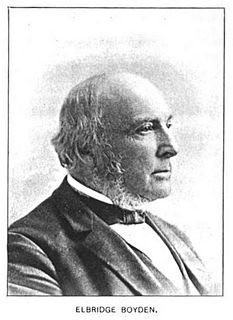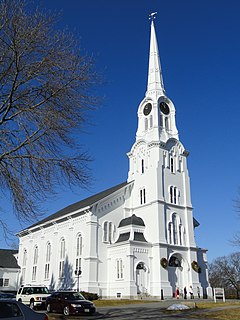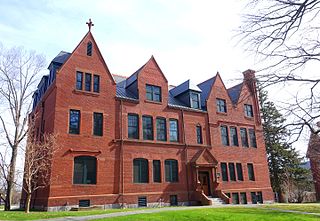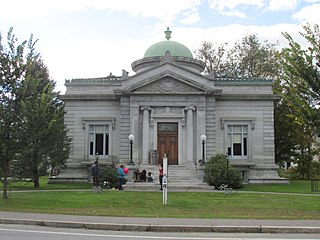Henry Forbes Bigelow was a Boston architect, best known for his work with the firm of Bigelow & Wadsworth. He was noted as an architect of civic, commercial and domestic buildings. In an obituary, his contemporary William T. Aldrich wrote that "...Mr. Bigelow probably contributed more to the creation of charming and distinguished house interiors than any one person of his time."
Richard Clipston Sturgis (1860-1951), generally known as R. Clipston Sturgis, was an American architect based in Boston, Massachusetts.

John W. Donohue, AIA (1869–1941) was an American architect who was active in Western Massachusetts during the first half of the 20th century.

Elbridge Boyden (1810–1898) was a prominent 19th-century American architect from Worcester, Massachusetts who designed numerous civil and public buildings throughout New England and other parts of the United States. Perhaps his best known works are the Taunton State Hospital (1851) and Mechanics Hall (1855) in Worcester.

Walter F. Fontaine was an American architect of French Heritage from Woonsocket, Rhode Island.

Shepard S. Woodcock (1824-1910) was an American architect practicing in Boston, Massachusetts during the second half of the nineteenth century.

Henry M. Francis, often known as H. M. Francis, was an architect in Massachusetts. A number of his works, alone or with sons, are listed on the United States National Register of Historic Places. His finest work may be the Murdock School in Winchendon, Massachusetts, built in 1887.

George Milford Harding (1827–1910) was an American architect who practiced in nineteenth-century Massachusetts, New Hampshire, and Maine.

Waldo V. Howard was an American architect practicing in the city of Brockton, Massachusetts and its suburbs.

Holman K. Wheeler was a prolific Massachusetts architect. Wheeler is responsible for designing more than 400 structures in the city of Lynn alone, including the iconic High Rock Tower which is featured prominently on the Lynn city seal. While practicing in Lynn and Boston over a career spanning at least 35 years Wheeler designed structures throughout the Essex County area, including Haverhill, Marblehead, Newburyport, Salem, Swampscott, and Lynn. Wheeler is responsible for a total of five Lynn structures listed on the National Register of Historic Places, more than any other person or firm.

Wesley Lyng Minor was an American architect in Massachusetts.

Amos Porter Cutting (1839–1896) was an American architect from Worcester, Massachusetts.

George G. Adams was an American architect from Lawrence, Massachusetts.

John Ashton (1860-1953) was an American architect from Lawrence, Massachusetts.

J. Williams Beal, Sons, successor to the office of J. Williams Beal, was a successful architectural firm based in Boston, Massachusetts. Established in 1920 by the sons of the late architect Beal, it remained in business into the 1980s.

John Stevens (1824-1881) was an American architect who practiced in Boston, Massachusetts. He was known for ecclesiastical design, and designed churches and other buildings across New England.
Henry Warren Rogers (1831-1915) was an American architect practicing during the late nineteenth and early twentieth centuries in Lynn, Massachusetts.

William C. Brocklesby (1848-1910) was an American architect practicing in Hartford, Connecticut.

William H. McLean was an American architect from Boston, Massachusetts. He is best known for the design of public libraries, many of which he designed as a member of the firm of McLean & Wright.

Eugene C. Gardner (1836–1915) was an American architect and author of Springfield, Massachusetts. Gardner was noted both for the architectural influence of his extensive practice as well as his writings on the American home. Gardner was the most notable architect of Springfield.






















